12-2: Stressors & Strain in the Workplace
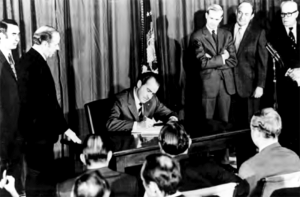
Let’s get clear on some important distinctions that’ll help you understand what’s actually happening when work gets stressful. Industrial-organizational psychology makes important distinctions between stressors and strains in workplace contexts. Stressors represent any disruptive forces that push your psychological or physical functions beyond their range of stability — basically, the things that cause stress. Strains constitute the undesirable personal outcomes that result from stressful experiences — basically, what stress does to you.
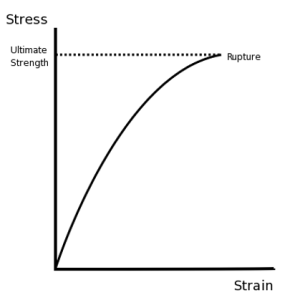
Think of stressors as the punches and strains as the bruises. Understanding this distinction helps you figure out whether you need to avoid the punches (deal with stressors) or treat the bruises (manage strains).
Common Workplace Stressors
Organizations are like stress factories — they present numerous potential stressors that can negatively affect your well-being. Lack of support from supervisors and coworkers represents a fundamental stressor that undermines your resilience. When you feel like you’re completely on your own, everything becomes exponentially harder. It’s like trying to move a couch by yourself when you really need a team.
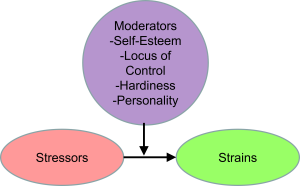
Work overload occurs when job demands exceed your capacity or available time, creating sustained pressure and fatigue. You know that familiar feeling when your to-do list keeps growing faster than you can check things off? When you feel like you’re running on a treadmill that keeps speeding up? That’s work overload, and it’s one of the most common stressors in modern workplaces.
Lack of control and autonomy significantly contributes to workplace stress, especially when you feel unable to influence your work environment or decision-making processes. This is particularly problematic in highly hierarchical teams or when group decision-making processes exclude your input. It’s like being a passenger in a car where you can see the driver is heading toward a cliff, but you have no access to the steering wheel.
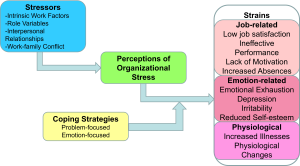
Work underload, monotony, and lack of challenge can create stress through boredom and underutilization of your skills and abilities. Yes, being bored at work is actually stressful! Your brain needs stimulation and challenge to function well. This can occur in teams where tasks are not well-distributed or where your capabilities are not recognized and utilized. It’s like being a race car driver stuck in stop-and-go traffic.
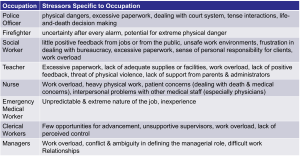
Aversive physical work environment includes factors like poor lighting, excessive noise, uncomfortable temperatures, or unsafe conditions that create chronic low-level stress. Even when you consciously adapt to these conditions, they continue draining your energy and contributing to overall stress load.
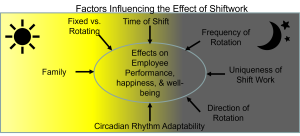
Shift work represents a particularly challenging stressor that disrupts natural circadian rhythms and creates ongoing physiological stress. Night shifts, rotating schedules, and irregular hours force your body to fight against its natural sleep-wake cycle. This creates chronic stress as your body struggles to maintain normal functioning while working against biological rhythms. Shift work also complicates family relationships, social connections, and self-care routines, multiplying its stressful effects.
Burnout: When Stress Becomes Overwhelming
Burnout represents the state of being emotionally, physically, and mentally exhausted by prolonged or excessive stress. It’s not just feeling tired after a long day — burnout is a chronic condition where you can no longer properly fulfill your job roles and maintain a healthy, balanced lifestyle. Think of it as your psychological and physical reserves being completely depleted, like a phone battery that won’t hold a charge anymore.
Predicting Burnout
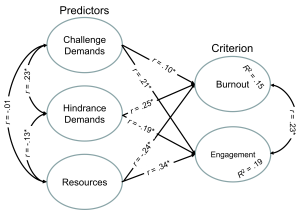
Research has identified several factors that predict burnout development:
- Chronic work overload without adequate recovery periods
- Lack of control over work processes and decisions
- Insufficient rewards (financial, social, or intrinsic)
- Breakdown of workplace community and social support
- Absence of fairness in workplace policies and treatment
- Conflict between personal and organizational values
Team factors significantly influence burnout risk. Teams with poor communication, high conflict, unclear expectations, and inadequate support systems create environments where burnout flourishes. Conversely, cohesive teams with strong mutual support, clear communication, and shared workload management help protect members from burnout.
Managerial Perspective on Stress: Challenge vs. Hindrance
From a managerial perspective, workplace stress can be understood as either challenge-related or hindrance-related, with dramatically different effects on employee well-being and performance.
Challenge-related stress arises from work demands that are difficult but potentially rewarding and that promote personal growth and achievement. Examples include stretch assignments, learning new skills, or working toward important deadlines. This type of stress is positively related to job satisfaction and negatively related to job search behaviors — people actually find it energizing and motivating.
Hindrance-related stress stems from work demands that interfere with work achievement and that provide no associated rewards for the individual. Examples include office politics, red tape, role ambiguity, and resource constraints. This type of stress interferes with work effectiveness and is negatively related to job satisfaction while positively related to job search behaviors — it makes people want to escape.
Understanding this distinction helps managers structure work in ways that provide appropriate challenges while minimizing hindrances, creating environments where stress actually enhances rather than undermines performance and well-being.
Group-Related Stressors
Here’s where things get really interesting: group dysfunction represents a significant category of workplace stressors that many people don’t think about, but it can be absolutely brutal. Role conflict within teams occurs when different team members have conflicting expectations about your responsibilities. Imagine your supervisor wants you to focus on quality while your team lead pushes for speed — you’re caught in the middle like a ping-pong ball, and there’s no way to win.
Role ambiguity develops when your role within the team is not clearly defined. Ever been in a situation where you weren’t sure what you were supposed to be doing, who was responsible for what, or how success was even measured? That uncertainty creates this low-level background stress that’s like having a song stuck in your head — it might not seem like much, but it’s constantly draining your mental energy.
Interpersonal conflict with team members creates ongoing tension and emotional strain. Unlike a single stressful event that you can recover from, interpersonal conflict can create a chronically stressful environment that’s really hard to escape. It’s like having to work in a room where the temperature is always uncomfortably hot — you never get relief.
Group conformity pressures can also create significant stress, particularly when group norms conflict with your personal values or when you feel pressure to engage in behaviors that compromise your well-being. Research on groupthink shows how dysfunctional group dynamics can lead to poor decision-making and increased stress for members who recognize but feel unable to challenge problematic group processes (Janis, 1971).
Have you ever been in a meeting where you knew the group was making a terrible decision, but you felt like you couldn’t speak up without becoming a target? That sick feeling in your stomach — that’s the stress of groupthink in action.
Social loafing by team members can increase stress for conscientious workers who feel compelled to compensate for others’ reduced effort (Latané et al., 1979). The sucker effect occurs when you become aware of others’ free-riding behavior and either reduce your own effort (to avoid being taken advantage of) or experience increased frustration and stress as you continue working hard while others coast along like they’re on vacation. Either way, it creates stress and resentment.
Coping with Stress: Individual and Group Strategies
Coping refers to the behavioral and cognitive efforts that help individuals manage and reduce stress. Understanding different coping approaches can help you develop more effective strategies for dealing with workplace stressors.
Problem-Focused Coping involves actions targeted toward solving the stress-inducing problem itself. This might include finding compromises to resolve issues, seeking additional resources, developing new skills, or changing work processes. When you can actually address the source of stress, problem-focused approaches tend to be most effective.
Emotion-Focused Coping uses cognitive strategies to minimize the emotional effects of stress-inducing events without necessarily changing the situation. This includes rationalizing situations to reduce stress, reframing events in more positive ways, or using relaxation techniques to manage emotional responses. When stressors can’t be directly changed, emotion-focused strategies help you manage your reactions.
The effectiveness of different coping approaches depends on the coping method used, the type of stressor encountered, and your self-perception and available resources. Team support can enhance both types of coping by providing practical assistance (problem-focused) and emotional support (emotion-focused).
Gender Differences in Stress Response
Research has identified interesting differences in how men and women typically respond to stress, though individual variation is significant and these patterns don’t apply to everyone.
Female Stress Response: Women often exhibit “tend and befriend” responses to stress — nurturing themselves and others while seeking to bond together for mutual support. The bonding hormone oxytocin may play a role in this response. Under stress, women often show behavioral and neurological signs of becoming more empathetic and tuned in to others’ needs.
Male Stress Response: Men under stress are more likely to socially withdraw and may attempt to numb stress responses through alcohol or other substances. Men are also more likely to become aggressive under stress. Research shows that men’s behavior and brains demonstrate less empathy and less tuning in to others when under stress.
These differences have important implications for team functioning and support systems, suggesting that diverse teams may benefit from having both types of stress responses available as resources for all members.
The Role of Control and Predictability
Research consistently demonstrates that perceived control and predictability play especially important roles in your stress experiences. You might be able to handle difficult working conditions, long hours, and heavy workloads if you feel like you have some control over your situation and can predict what’s coming next. It’s the difference between riding a roller coaster (thrilling because you chose it and know it’s safe) and being in a car accident (terrifying because it’s unpredictable and out of your control).
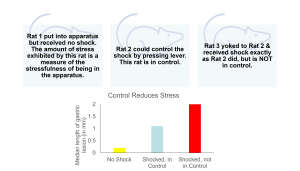

Group decision-making processes significantly impact your sense of control. Teams that use collaborative decision-making approaches and ensure all members have meaningful input tend to enhance individual feelings of control. Think about the difference between a team where everyone has a voice and their opinions matter versus one where decisions are made by a few powerful people behind closed doors and then imposed on everyone else.
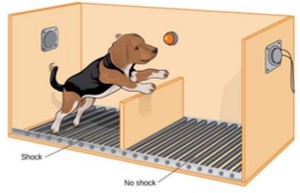
The concept of learned helplessness becomes relevant when you repeatedly experience situations where your actions have no effect on outcomes (Seligman, 1972). This can occur in dysfunctional teams where your input is consistently ignored or where group processes make individual contributions feel meaningless. Over time, this can lead to generalized feelings of powerlessness that extend beyond specific work situations and contribute to depression and anxiety disorders. Ever felt like “nothing I do matters anyway”? That’s learned helplessness creeping in, and it’s dangerous for your mental health.
Role-Related Stressors
Role variables represent significant sources of workplace stress that can seriously affect your performance and well-being. Role conflict occurs when work expectations and perceived responsibilities don’t match the actual work required. For example, imagine you’re hired as an assistant to handle policy development and management liaison duties, but instead you spend your time taking meeting minutes and organizing refreshments for events. The conflict between what you expected to do (and probably what you’re good at) and what you’re actually doing creates ongoing stress and frustration.
Role ambiguity develops when job duties and expectations are not clearly defined, leaving you uncertain about your responsibilities and performance standards. This is particularly problematic in team environments where group roles are not clearly established or where role expectations change frequently without clear communication. It’s like playing a game where nobody tells you the rules, but you’re still expected to win.
Role overload develops when you feel you lack the necessary skills, workplace resources, or time to complete required tasks. Research demonstrates strong correlations between role overload and stress, with associated outcomes including anxiety, depression, and anger, particularly when you have little control over your job (Parker & Sprigg, 1999). It’s like being asked to juggle while riding a unicycle — even if you’re good at both individually, doing them together is overwhelming.
Organizations can reduce negative consequences of role overload by actively ensuring you have increased control over your work and by fostering effective teamwork that distributes workload appropriately. When teams work well together, they can help prevent role overload by sharing the burden and providing support when things get hectic.
Interpersonal Relationships and Conflict
Interpersonal conflict represents one of the most frequently noted stressors in workplace environments, and for good reason — it can make your work life absolutely miserable. Understanding different conflict styles can help you navigate these situations more effectively and reduce the stress that comes with them.
Conflict can arise when resources are scarce (fighting over the good computer or the window office), when you have incompatible interests with colleagues (you want to focus on quality while they want to rush through tasks), or when you perceive unfair treatment (some people get better assignments or more recognition). For instance, disagreements over equipment access, conflicts between detail-oriented and efficiency-focused team members, or resentment over differential compensation can all generate significant interpersonal stress.
The five conflict styles offer different approaches to managing interpersonal tension, and understanding them can be like having a toolkit for dealing with workplace drama:
Avoiding style: This is when you pretend conflict doesn’t exist — you just ignore it and hope it goes away. It can work for minor issues that might resolve themselves, but it often leads to triangling (discussing conflicts with third parties instead of the people actually involved) and withdrawal behaviors. Ever found yourself complaining to your friends about a coworker instead of talking to the coworker directly? That’s triangling, and while it might feel good in the moment, it doesn’t solve anything.
Accommodating style: This involves giving up to end conflict — you just go along with whatever the other person wants. It might preserve relationships in the short term, but it can build serious resentment over time. Sometimes you need to pick your battles, but constantly giving in isn’t healthy for you or the relationship.
Forcing style: This treats situations as zero-sum games where someone has to win and someone has to lose. It can be effective in emergencies when quick decisions are needed, but it damages relationships over time because nobody likes feeling steamrolled.
Collaborating style: This seeks win-win solutions where everyone benefits. It’s often the ideal approach because everyone walks away satisfied, but it can be time-consuming and requires everyone involved to be willing to work together genuinely.
Compromising style: This uses give-and-take approaches through negotiation. Everyone gives up something to get something. It’s faster than collaborating but might leave everyone only partially satisfied.
Understanding these styles can help you choose appropriate responses to team conflicts and reduce the stress associated with unresolved interpersonal tensions. The key is matching your approach to the situation and the people involved.
Longitudinal research involving over 15,000 Finnish employees demonstrated significant links between interpersonal conflict at work and subsequent health problems (Romanov et al., 1996). This wasn’t just correlation — the researchers followed people over time and showed that workplace conflict actually caused health issues. Other negative outcomes of interpersonal conflict range from depression and job dissatisfaction to aggression, theft, and sabotage. In extreme cases, interpersonal conflict may also contribute to workplace violence, representing a serious escalation that nobody wants to experience.
Group Dynamics and Worker Well-Being
You might be wondering, “How exactly do group dynamics affect my well-being?” Let’s dive into the specific ways that team functioning impacts your health and happiness at work — because the connections are stronger than you might expect.
Team Cohesiveness and Well-Being
Group cohesiveness — the strength of group members’ attraction to maintaining membership and the strength of links among members — significantly impacts individual well-being. Think about teams you’ve been part of where everyone genuinely liked working together and supported each other versus teams where people couldn’t wait to escape and go home. The difference you felt is cohesiveness in action.
High cohesion is linked to higher productivity, better decision quality, greater member satisfaction, and increased employee courtesy (Mullen & Copper, 1994). When teams are cohesive, work feels more enjoyable, problems get solved more effectively, and everyone tends to be more helpful to each other. However, excessive cohesion can lead to groupthink, where the desire to maintain harmony overrides critical thinking. It’s like when a group of friends all agree to do something they individually think is a terrible idea just to avoid conflict — harmony becomes more important than good judgment.
Several factors influence group cohesiveness and, consequently, worker well-being:
Stability of membership: Groups with consistent membership tend to be more cohesive and create more predictable, less stressful environments. When team membership is constantly changing, you’re always having to rebuild relationships, figure out new dynamics, and establish trust all over again. It’s exhausting.
Group size: Smaller groups (around 5 members) tend to be more cohesive and less stressful to work in. Amazon actually has a “two-pizza rule” — if a team can’t be fed with two pizzas, it’s too big. Larger groups tend to have more coordination problems, more interpersonal conflicts, and make individual members feel less important and connected.
Group status: Higher-status groups tend to be more cohesive, which can enhance member well-being through increased pride and sense of belonging. People feel better about being part of something that’s perceived as important, successful, or prestigious.
Outside pressure: External challenges can increase cohesion (think about how natural disasters bring communities together), but they may also increase stress levels. It’s a trade-off between feeling more connected to your team and feeling more pressure from external demands.
Team Effectiveness and Individual Well-Being
Work team effectiveness encompasses three dimensions that are directly related to worker well-being, and understanding these can help you figure out whether your team is helping or hurting your overall work experience:
Team Performance: How well the team performs regarding productivity, quality, and cost control. When your team is successful, you feel successful too — there’s a psychological boost that comes from being part of something that works well.
Attitudes: Quality of work life, trust in management, and organizational commitment. Effective teams create positive attitudes that benefit everyone involved. When your team functions well, you’re more likely to feel good about your job, trust your leaders, and want to stay with the organization.
Withdrawal: Turnover, absence, and tardiness. When teams work well together, people actually want to show up and stay. Poor team functioning, on the other hand, makes people want to escape — hence higher rates of calling in sick, being late, or ultimately quitting.
Effective teams require both taskwork (task-oriented aspects like coordination and planning) and teamwork (process-oriented aspects like communication and mutual support). When teams excel in both areas, individual members experience reduced stress, increased job satisfaction, and better work-life balance. It’s like the difference between a well-oiled machine where everyone knows their role and a group of people working at cross-purposes and getting in each other’s way.
Group Decision-Making and Stress
Poor group decision-making processes can significantly increase individual stress levels, often in ways that aren’t immediately obvious. Common problems include:
Information sharing failures: When groups don’t effectively pool unshared information (information that only some members have), poor decisions result, leading to frustration and stress for everyone involved (Stasser & Titus, 1985). Ever been in a meeting where you had important information that could have changed the decision, but you never got a chance to share it? That feeling of “if only they had listened to me” is incredibly stressful.
Coordination loss: When team members expend energy in different directions, individual efforts feel wasted and ineffective. It’s like trying to move a heavy couch when everyone is pushing in different directions — lots of effort, but no progress, and everyone gets frustrated.
Process conflicts: Disagreements about how work should be accomplished create ongoing tension that affects everyone’s stress levels. Even when people agree on what needs to be done, fighting about how to do it can be exhausting.
Effective group decision-making follows clear stages: diagnosing the problem, generating solutions, evaluating solutions, choosing a solution, and developing and implementing an action plan. When these processes work well, individual stress decreases because members feel their contributions are valued, the team makes good decisions, and everyone understands their role in implementation.
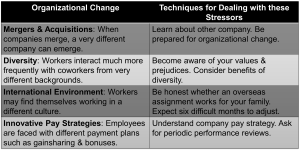
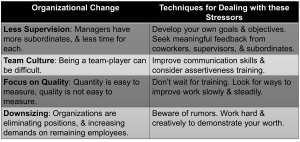
Media Attributions
- Nixon Signing OSHA Act of 1970 © U.S. Department of Labor is licensed under a Public Domain license
- Stress Strain Curve © Toiyabe is licensed under a Public Domain license
- Stressors, Strains, and Moderators adapted by Jay Brown
- General Stress Model adapted by Jay Brown
- Occupational Stress
- Shiftwork adapted by Jay Brown
- Path Diagram Predicting Burnout and Engagement adapted by Jay Brown
- Executive Rat Part 1 adapted by Jay Brown
- Executive Rat Part 2 adapted by Jay Brown
- Shuttle Box © Rose Spielman is licensed under a CC BY (Attribution) license
- Organizational Change Can Be Stressful Part 2
- Organizational Change Can Be Stressful Part 1
